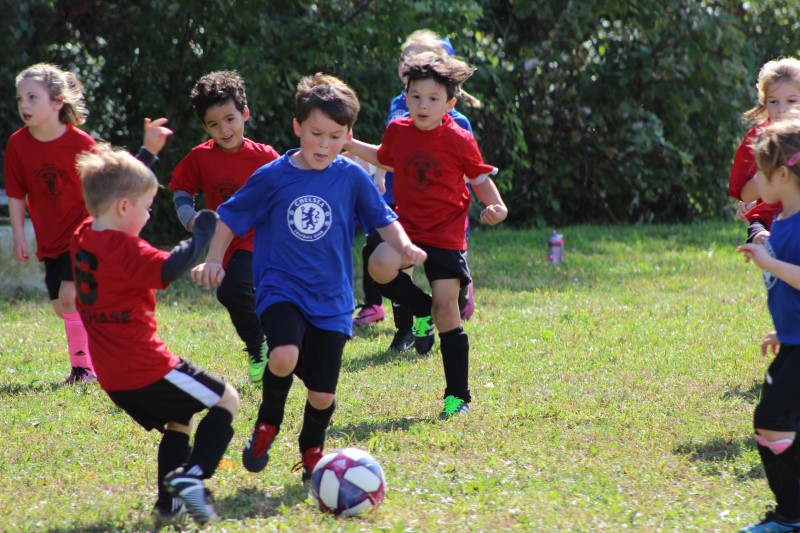Healthy Kids



Prevent Iron Deficiency
Madison Ford, MS, RDN, ISU Alum
Iron deficiency happens when there is not enough iron in the body. It's one of the most common health problems in children and the main cause of anemia worldwide:
- About 273 million children under the age of 5 have anemia.
- Half of those cases are caused by iron deficiency.
Role of Iron in the Body
Iron is essential for making red blood cells:
- The body will use iron to make hemoglobin.
- Hemoglobin is a protein in red blood cells that carries oxygen to the whole body.
- Someone with iron-deficiency anemia will have a lower number of red blood cells.
Symptoms of Iron Deficiency
Being really tired is the most common sign of iron deficiency anemia:
- Your child might also be very weak or pale.
- You might notice that they get headaches often or feel dizzy.
- They could have cold hands and feet, shortness of breath, eat non-food items, or have a rapid heartbeat.
Sometimes children may not have any of these signs! Having your child tested can be helpful to check for low iron before you notice any of these physical signs.
Sources of Iron
The amount of iron your child needs varies with age: 11 mg/day is the general recommended dietary allowance.
Your child should be able to get all the iron they need through their food:
- Breastfeeding babies can usually get enough iron through their mom's breast milk until they are 6 months old.
- When your little one turns 6 months old, try to give them a little extra iron in their diet. You can do this by starting to offer them iron-rich solid foods.
- The best sources of iron are found in red meat, chicken, and turkey. You can also find iron in beans, tofu, and dark green leafy vegetables.
There has been a huge effort to improve iron deficiency anemia through iron-fortified food. Examples of iron-fortified foods are fortified breakfast cereals, whole-grain, and enriched bread. Check to see if a food is fortified with iron by checking the nutrition label. If you have concerns about your child being iron-deficient, reach out to your doctor.
Breakfast Refuels Kids
Sara Orr, MS, RDN, ISU Alum
During sleep our bodies use stored nutrients to provide the body with energy needed to perform basic body functions. After we wake, eating breakfast refuels our bodies to start the day. Kids often have longer overnight fasting periods because of higher sleep demands. This makes breakfast even more important.
Daily obligations might make it difficult to find the time to eat breakfast in the morning. This can leave children eating on the go or not at all. Studies have shown that the quality of food eaten at breakfast is related to the type of food eaten throughout the day.
Breakfast is the most important meal of the day, but it does not need to be stressful. Try the following things to help make sure your children’s breakfast is a success!
- Get organized the night before: Make it a habit to do your breakfast prep before you go to bed.
- Set the alarm 10 minutes earlier: That's all it takes to fix a quick morning bite.
- Pack your breakfast to-go: Have a healthy option to eat on the way to school and have it ready to grab on the way out the door.
- Be a positive role model: Sit down and eat breakfast with your kids or have them help prepare to go breakfast packs.
If eating at home is not an option, encourage your children to eat at their school breakfast program. The requirements of school breakfast programs are to provide and offer one cup of dairy, one cup of fruit, and one ounce of grains.
Quick and Easy Kid-Friendly Breakfasts
- Yogurt Parfait: Layer fat-free or low-fat plain yogurt with your crunchy cereal and blueberries.
- Instant oatmeal: Make it with low-fat or fat-free milk instead of water. Add fruit and walnuts or mix in ¼ cup applesauce and sprinkle with cinnamon.
- Breakfast smoothie: Blend low-fat milk, frozen strawberries, and a banana.
- Toaster waffle: Toast and top with nut butter and apple slices.
- Pita egg sandwich: Stuff a whole-wheat pita with a sliced, hard-cooked egg and low-fat shredded cheese.
- Banana roll-ups: Spread peanut butter on a whole-wheat tortilla. Add a peeled, whole banana and roll it up.
- Bagel and veggies: Spread hummus on a whole-grain toasted bagel. Top with sliced cucumbers and tomatoes.
- English muffin: Add lean ham and low-fat Swiss cheese to a toasted whole-grain English muffin.
Food Powers Athletes
Lizzy Rowden, MS, RDN, ISU Alum
In 2020, researchers compared how many calories athletes were eating compared to the estimated number of calories they burn each day. They tracked the food intake of 240 athletes and found that the athletes at a lower weight were not eating enough calories. Therefore, their nutrition needs were not being met. Read on to learn about the power of nutrition and snacking to fuel young athletes.
Nutrition for Young Athletes
Young athletes need sufficient nutrition for proper growth, injury prevention, and optimal performance. The following breakdown is recommended:
- Protein: 10-30% of calories consumed.
- Fat: 25-35% of calories.
- Carbohydrates: The remainder of the total calories.
Post Sporting Events Nutrition Needs
Extra carbohydrates and protein may be required during long sporting events. Within one hour of completing the event, young athletes need:
- Carbohydrates: 50 grams
- Protein: 5-10 grams
Some post sporting events snacks include 12 oz of chocolate milk, peanut butter and jelly sandwich on whole wheat bread, a bagel with peanut butter or other nut butter, or a banana with peanut butter.
A Word About Sugar
High carbohydrates/calories do not mean snacking on high sugar foods. A 2020 study helped explain why:
- Researchers compared the calories burned by young athletes during a sporting event with the calories consumed following the event.
- The athletes burned an average of 170 calories during an event.
- The same athletes consumed 213 calories after the event.
- Nearly half (106 calories) of those post-event calories were from high sugar foods!
- The recommended grams of sugar per day is 25 grams.
- Athletes in this study exceeded that amount in one meal.
This study suggests decreasing sugary snacks post sporting events and encouraging nutritious snacks. Competitive sports can help establish the good habit of physical activity for young children and adolescents. Developing healthy eating habits will also be beneficial for young children and adolescents.

